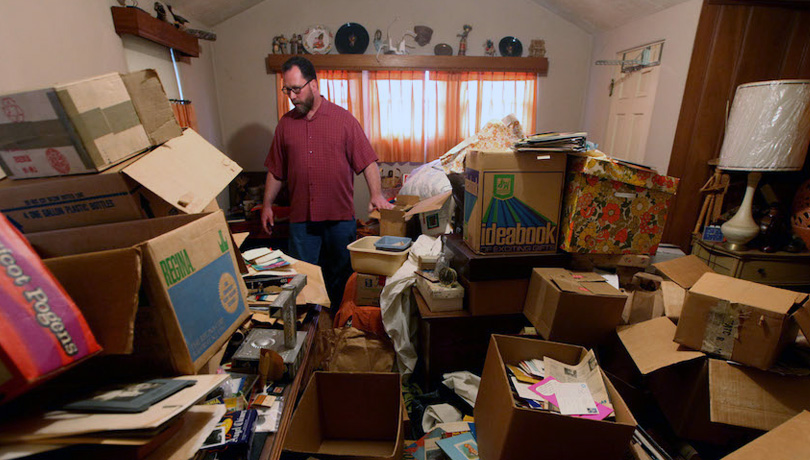Hoarding is a behavior that sparks debate across cultures, raising questions about its origins and implications. Is it a survival strategy, a cultural norm, or a psychological disorder? Historically, many viewed hoarding as a rational response to economic instability or societal expectations. Today, however, it is often associated with cluttered homes and the challenges of letting go.
The line between necessity and disorder is not always clear-cut. While some see hoarding as a natural reaction to scarcity or personal attachment, others view it as a behavior that disrupts daily life. Cross-cultural insights reveal that hoarding is not just an individual issue but also a reflection of societal values and norms. Understanding these perspectives is essential to offering meaningful help while respecting diverse cultural frameworks.
Historical Perspectives on Hoarding
Historically, hoarding was often seen as prudent rather than problematic. Literature and historical records show that accumulating possessions was tied to survival in challenging economic times.
Economic Contexts
- Shakespearean Era: During periods of famine, stockpiling food and goods was considered a wise practice.
- Victorian England: Charles Dickens, shaped by his impoverished upbringing, portrayed hoarding as a necessary safeguard against future hardships.
In these contexts, hoarding was culturally normalized and reflected resilience rather than dysfunction.
Modern Cultural Interpretations
In contemporary times, societal norms have shifted, and hoarding is increasingly framed as a disorder. However, cultural values still play a crucial role in shaping perceptions of this behavior.
Consumerism and Minimalism
Modern societies often promote conflicting ideals:
- The consumer culture encourages accumulation, offering satisfaction through ownership.
- The minimalist movement emphasizes decluttering and simplicity.
Hoarding may arise as a response to this paradox, where individuals struggle to reconcile their attachment to possessions with societal pressure to let go.
Public vs. Private Values
Possessions carry both public and private significance:
- Public value: Objects that signal wealth, status, or social identity.
- Private value: Items with sentimental or personal meaning, like family heirlooms.
For individuals who hoard, the private value of possessions often overshadows their practical utility, making it difficult to discard items.

Cross-Cultural Prevalence of Hoarding
Research shows that hoarding exists in many cultures, though its prevalence and interpretation vary.
| Region | Findings |
| North America | Hoarding is recognized as a disorder, with prevalence rates of 1.5-6%. |
| Asia | A Singaporean study found that 30% of psychiatric patients reported significant hoarding behaviors. |
| Global Trends | Across cultures, lifetime prevalence averages around 2%. |
These findings highlight that hoarding is a global phenomenon, but cultural norms influence whether it is seen as a problem or a lifestyle choice.
Cultural Influences on Hoarding Behavior
Materialism and Attachment
In societies that emphasize material success, the distinction between collecting and hoarding can blur. The accumulation of possessions is often celebrated, but excess can lead to social stigma.
Economic Hardships
Economic instability has historically driven hoarding behavior. For instance:
- Post-war Generations: Individuals who lived through scarcity often retained items out of fear of future shortages.
- Modern Uncertainty: Economic recessions can prompt stockpiling as a form of security.
Religious and Cultural Beliefs
Certain cultural practices encourage the preservation of specific items, such as religious artifacts or family treasures. In these contexts, hoarding may not signify dysfunction but rather a commitment to tradition.
Hoarding Through Anthropological Lenses
The medicalization of hoarding, as seen in classifications like the DSM-5, often overlooks cultural and personal contexts. Anthropological perspectives offer a broader understanding of this behavior.
Emotional and Social Connections
Objects can represent relationships, memories, or milestones, making them emotionally significant. For hoarders, discarding such items may feel like losing a part of themselves.
Resistance to Waste
Some individuals view hoarding as an ethical stance against wastefulness. This perspective aligns with cultural critiques of consumerism and disposable lifestyles.
Survival Mechanisms
In communities facing economic or environmental challenges, hoarding serves as a practical response to uncertainty, ensuring access to essential resources.
Need Hoarding Cleanup? We’re Just a Call Away
& Ready to Respond Quickly!

Understanding Necessity vs. Disorder
When examining hoarding, it is vital to distinguish between necessity and disorder. Here’s a framework to help differentiate:
| Criteria | Necessity | Disorder |
| Motivation | Survival, culture, or practicality | Emotional distress, anxiety |
| Impact | Minimal disruption, sometimes beneficial | Significant impairment in daily life |
| Resolution | Often resolves naturally | Requires professional intervention |

How to Offer Hoarding Help
Effective hoarding help requires empathy, cultural awareness, and practical strategies.
Steps to Support Someone Struggling with Hoarding
- Listen Without Judgment
Start with understanding. Avoid labeling their behavior as “irrational” or “unhealthy.” - Encourage Small Changes
Suggest manageable steps, such as organizing one room or category of items at a time. - Respect Cultural Contexts
Recognize cultural beliefs and practices influencing their attachment to possessions. - Seek Professional Guidance
Connect them with therapists or organizations specializing in hoarding intervention. - Focus on Safety
Prioritize clearing spaces that pose immediate hazards, like blocked exits or fire risks.
Final Verdict
Hoarding is a complex behavior shaped by cultural, historical, and personal factors. While modern psychiatry often classifies it as a disorder, cultural perspectives reveal that it can also be a rational response to life’s challenges. By understanding these nuances, we can provide more compassionate and effective hoarding help, bridging the gap between necessity and disorder.
At LifeCycle Transitions, we specialize in providing personalized, culturally sensitive hoarding help. Our compassionate team understands the emotional and cultural ties that make decluttering challenging. Give us a call today!
